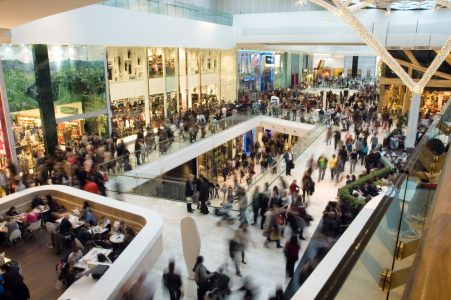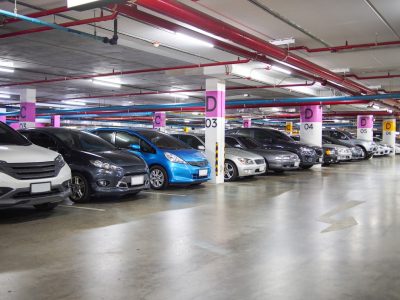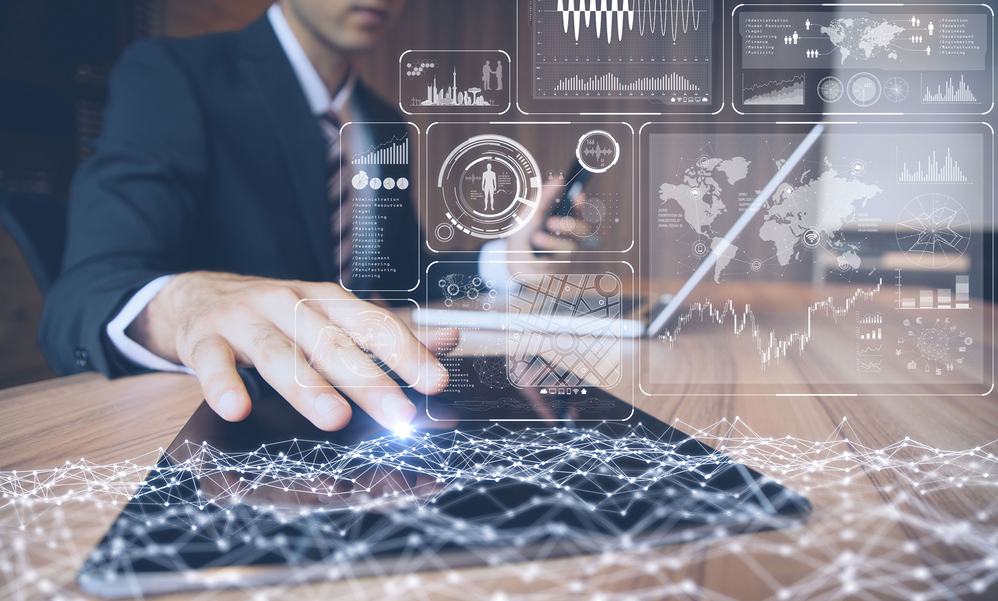Listen to your building – What your building always wanted to tell you
Issue :
read all articles online
read as pdf
Our buildings are more than just a roof over our heads, a home or a workplace. The greater part of our lives play out within their walls. They can support us as we go about our everyday tasks so that we save time and money. We only have to lend them our eyes and ears and give them the opportunity to communicate with us. The EnOcean wireless standard suits this purpose perfectly.
The eyes and ears of a building – these are electronic sensors that already enable classic building automation systems to control the lighting, shading and room climate of a building. The “Internet of Things“ adds new dimensions to classic building automation by transmitting sensor data to cloud-based IT platforms that link the data with other information available on the Internet and smart data analysis tools. This gives an entirely new dimension to services and business models.
Classic building automation: lighting, shading, HVAC
In classic building automation, lighting, shading and HVAC are controlled locally with suitably positioned wireless sensors, using so-called room controllers. The individual room controllers provide local control intelligence and are connected to each other via classic room automation buses, such as KNX, LON, BacNet, TCP, etc. The wireless connection of self-powered sensors based on the EnOcean radio standard to wall switches, window contacts, temperature sensors and motion detectors maximizes flexibility and reduces costs compared to a wired solution. In addition to switches for controlling lights and shading, window contacts and motion detectors create the perfect synergy, since they effectively combine functions such as rain protection with intrusion security and energy savings.
The EnOcean Alliance, with over 400 members in the field of building automation, offers the benefits of a comprehensive ecosystem of interoperable self-powered wireless sensor solutions.
New IoT buzzword: “building asset management“
Building asset management is an important new tool with which companies establish the requirements for the optimum management of cost-intensive use of resources in terms of space, personnel and objects. An average of 50% of the available space in a typical office building remains unoccupied over the course of a business day.
Room sensors supply detailed information on how building areas and rooms are actually being used and permit optimum room planning and assignment of employees to available spaces. Services in the area of human resource and inventory management can be significantly optimized with the aid of suitable sensors. These sensors supply detailed information on usage patterns during normal operation as well as events, and they also take into account differences in times of day and seasonal effects. Usage patterns of the building, personnel and inventory can thus be prepared to determine the optimum use of resources and security requirements.
Saving lives – even this is simplified through the use of sensors due to the ability to determine the location of a person left behind in the event of an emergency evacuation. Higher security and fewer thefts by detecting people in restricted areas prevents unauthorized access and optimizes access control.
And finally, sensors make it possible to optimize energy consumption and air quality based on the actual space occupancy.
Asset management in office spaces and hotels
Building space is an extremely expensive resource, costing up to several 100 euros per square meter per month. However, less than 70% of many spaces is used, such as office working areas, hotel rooms, conference rooms, cafeterias, hallways and storage rooms. As a result, running expenses in the millions are unnecessarily incurred for heating, lighting and maintenance. Existing hotel rooms can be upgraded without problems with the aid of wireless sensors without impairing normal building operation, which reduces energy consumption by 30% to 40%.
Suitable sensors can be used to prepare the use pattern for the building, personnel and inventory: presence detectors in the room or at individual seats; door contacts; sensors for counting people; power meters for detecting the activity of electronic devices (such as printers, copiers, soap dispensers, coffee machines, electric kettles, ventilation units). Cyclically transmitting sensors, so-called “beacons” are used to determine the locations of mobile devices and furniture. If the capacity of company facilities is only partially utilized, for example, combining multiple sites can help reduce costs. And if the building system determines that no employees enter the building before 8:00 am, the heating times can be adjusted accordingly.
 Sanitary facility management
Sanitary facility management
It is practically impossible to forecast the optimum maintenance and cleaning of sanitary facilities in office buildings according to their actual use. For example, toilets are often not cleaned when needed, and paper and soap dispensers are empty, which is frustrating for users. Simple monitoring of sanitary facilities with presence sensors makes it possible to efficiently clean the areas and plan resources, which, in turn substantially lowers costs and increases user satisfaction.
Analyzing the use and determining the location of devices and furniture
Current sensors in the supply line enable the use of electronic devices in a building to be evaluated. To analyze capacity utilization, a power meter located either in the power cable or the plug transmits the device’s current status. Wireless beacons are used to determine the location of mobile objects. An integrated temperature and humidity sensor can also supply the ambient conditions of the inventory. To determine the location, the wireless gateway infrastructure analyses the beacon’s signal strength. Electrical and electronic devices can also be turned on and off with the aid of presence sensors in order to thereby optimize the service life and energy consumption.
Monitoring buildings for insurance companies
Insurance companies incur costs in the billions every year due to the late detection of events such as water leaks, fire damage and building break-ins. This, in turn, is reflected in the constantly rising insurance premiums. In the event of flooding, fire or intrusion, EnOcean-based sensors supply in real time the data and information needed to alert the owner and the insurance company. Serious and cost-intensive incidents can thus be detected early on and resolved accordingly.
Sales areas and gastronomy

When it comes to sales and commercial space, the flow of customers correlates with staff requirements, sales figures and location attractiveness. Smart data analysis makes it possible to distribute sales personnel resources according to need and also provide an indication of any improvements that may be needed to areas where sales are weak. Presence detectors supply detailed information on parameters such as movement profiles, number of people and table occupancy. A call button on the restaurant table or at special sales kiosks, which can be used to request a waiter or sales person, can help increase customer satisfaction, for example. Small animal traps, which can be immediately emptied via special sensors as needed according to legal requirements, are also relevant.

Presence detectors provide detailed information by highlighting areas with potential for improvement.
Parking space management
Another important application in buildings is the monitoring of parking space. Pressure sensors, installed in the ground, detect the direction of vehicle travel and thus also the occupancy of parking spaces.

Spending hours searching for parking lots will soon be a thing of the past. Pressure sensors, installed in the ground, transmit real-time data about the availability of parking spaces. Welcome to the Smart City.
Maintenance of motors, gears and brakes
Facility managers generally prefer detecting down times early on, since preventive maintenance is always associated with high costs. For example, the condition of a motor can be detected with the aid of current sensors and the status of gears and brakes via temperature sensors. For this purpose the current or temperature development, which changes as equipment wear increases, is analyzed continuously. Using suitable algorithms, the necessary equipment maintenance can be carried out as needed and in time.
Requirements for sensors and connectivity to the IoT
A suitable EnOcean IoT gateway networks sensors and actuators that meet the EnOcean wireless standard with the cloud via the Internet. The Internet protocol and suitable middleware connectors can be used to quickly and easily connect energy harvesting wireless sensors to applications on the Internet and to interact with a cloudbased platform such as IBM Watson, Amazon Echo, Microsoft Azure, Apple HomeKit, Google Home or Crestron.
This scenario forms the basis for the Internet of Things. With the aid of an interoperable network, generated data can be used for smart device and building control and to optimize facility management as well as implement entirely new services in the area of building use. It is important to detect the extensive data that a building can communicate to us, using suitable sensors based on the EnOcean radio standard, and to make good use of this information. We can thus optimize long-term workflows and processes, save money and increase the energy efficiency of our buildings. And as you surely know: many eyes can see more than just two.
New articles in Smart Spaces
Top articles





